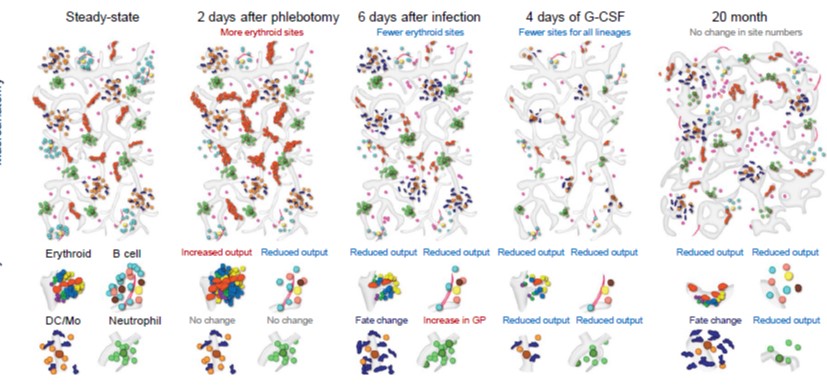A Cold-Blooded Concept: Launching a Method for Safer, Long-Lasting Platelet Storage
Research By: Yi Zheng, PhD | Jose Cancelas-Perez, MD, PhD
Post Date: July 1, 2019 | Publish Date: Summer 2018
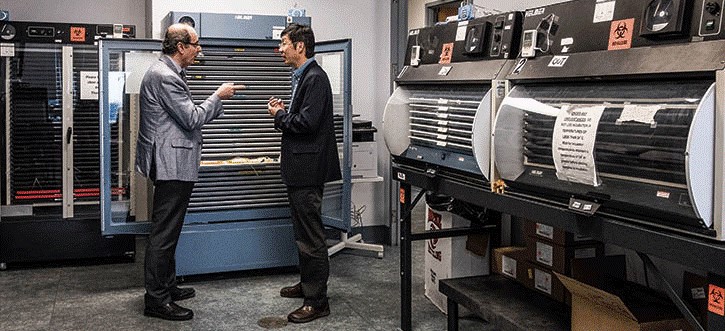
Every year, trauma patients, cancer patients and other people who need blood products in the United States receive more than 2 million units of platelets at an estimated cost of $1.5 billion.
Every year, however, as many as 20 percent of those platelets expire before they can be transfused. The problem: when stored at room temperature, as required by federal regulation, platelets last only five days. Unlike other blood products, platelets cannot be refrigerated without losing efficacy.
At least not yet.
Experts at Cincinnati Children’s are further developing a method they invented of treating platelets that appears to allow refrigerating them for up to 14 days, potentially tripling shelf life. Such an improvement could transform blood banking, be it to serve children with leukemia or soldiers wounded on distant battlefields.
THE GERM OF AN IDEA
Yi Zheng, PhD, is a blood expert who directs the Division of Experimental Hematology and Cancer Biology at Cincinnati Children’s. He has been hunting for small molecule compounds that can improve treatment for blood-borne cancers and other disorders for more than 25 years.
For many of those years, he has collaborated with Jose Cancelas, MD, PhD, who directs the Hoxworth Blood Center, the primary blood supplier to more than 30 Cincinnati-area hospitals. Their long-term collaboration led to the realization that some of the small molecule compounds offered potential that could extend well beyond pediatrics.
“This is one of the biggest problems in blood banking. Just like meat, the longer you leave platelets at room temperature, the higher the risk of bacterial contamination,” Cancelas says. “Right now, even though we take great care to prevent contamination, approximately one in every 70,000 platelet products in the U.S. carries detectible levels of bacteria. One in 200,000 people who receive transfusions develop a clinically significant infection, and one in 500,000 develop sepsis.”
Minimizing this risk requires constant testing and juggling of platelet supplies.
“Unfortunately, platelets remain the only blood product that cannot withstand refrigeration. As a result, we experience shortages on some days when we have high patient volumes, and wasteful oversupplies on other days,” Cancelas says.
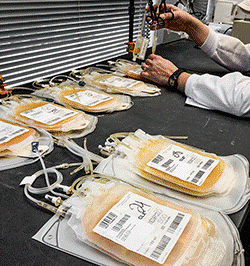
HOW TO STOP COLD-INDUCED PLATELET DAMAGE
The platelet-protecting discovery flows from Zheng’s basic science work to understand cellular signaling mechanisms, specifically the structure-function relationship that regulates Rho family GTP-binding proteins.
Rho GTPases are a class of signal senders that play several important roles in regulating cellular activities, including actin cytoskeleton reorganization, transcription activation, and DNA synthesis.
During this exploratory work, the Zheng and Cancelas labs developed a mouse model that lacks a specific Rho protein. Once deleted, the team discovered that mouse platelets entered a hibernation-like state. Then they developed a small molecule that also can trigger a similar effect, but reversibly.
Further testing revealed that the small molecule can be applied to a bag of platelets as an ex-vivo treatment, allowing the platelets to withstand damage triggered by cellular reactions to cold temperatures.
In a critical final step, the team learned that diluting the compound effectively washes it away, allowing platelets to emerge from hibernation and resume normal function. This can be achieved either by mixing platelets with plasma in the lab, or by allowing the platelets to mix with other blood components during transfusion.
“The binding of this compound to its target is reversible and relatively weak,” Zheng says. “As soon as these platelets join a larger blood supply, the drug is diluted and the platelets ‘wake up.’ ”
So far, in mice, no toxic side effects have been detected from exposure to the compound.
PLATELET STORAGE PROJECT ENTERS BUSINESS DEVELOPMENT STAGE
Now the journey begins for moving this potential breakthrough technology into human clinical trials—and that is where the work of the recently expanded Cincinnati Children’s Innovation Ventures group kicks in.
The platelet storage project is part of the “small molecules” portfolio at Innovation Ventures, which represents about one fourth of the discoveries at Cincinnati Children’s earmarked for accelerated commercialization efforts, says Karen Lammers, a portfolio manager for the group.
“Who better to come up with therapies to treat our patients than us?” Lammers says. “We have extensive genetic understanding. We are experts at developing mouse models. And we can manipulate those mouse models for drug development.”
Another reason why small molecules became an asset class was to continue working on a library of more than 250,000 chemical compounds that Procter & Gamble donated to the University of Cincinnati and Cincinnati Children’s in 2007. “We’ve been using that library to identify target molecules that we are developing further. I know of only a few other academic institutions that have that type of in-house resource,” Lammers says.
On the platelet project, the Innovation Ventures group is working with the inventors to perform several critical tasks.
So far, patent filings have occurred in the U.S., Canada, Europe, China, and Australia. The acceleration team, with support from Cincinnati Children’s investment committee, intends to advance this product towards the filing of an Investigational New Drug (IND), which is anticipated to cost approximately $2 million, says David Wang, portfolio manager for biologics and cell therapies. Applications for other federal and state funds have begun.
Ultimately, obtaining U.S. Food and Drug Administration approval also will require human-cell toxicology testing in a GMP-certified lab, plus planning and performing phase I and II clinical trials.
“Our goal is to help move the product development process along, find strategic partners for investment, and ultimately provide clinical impact,” Wang says.
WHAT’S NEXT FOR PLATELET STORAGE?
An encouraging sign: in January 2018, the FDA and the Department of Defense announced a collaboration to “expedite availability of medical products essential to the health of our military service members, particularly those products used to treat injuries in battlefield settings.”
Platelet cold storage is one of the top needs joining that priority list.
—By Tim Bonfield
(This article originally appeared in the Summer 2018 issue of Research Horizons.)
CLICK THE ARROWS BELOW TO LEARN MORE ABOUT OTHER SMALL MOLECULE PROJECTS IN THE INNOVATION VENTURES PORTFOLIO
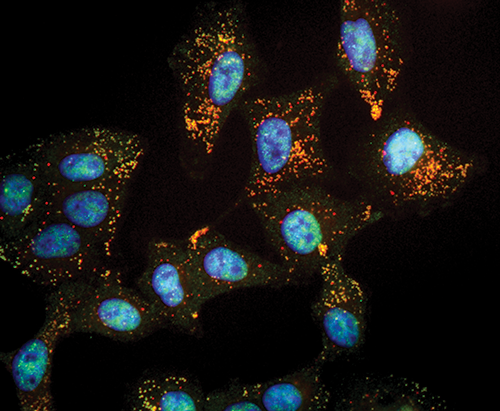

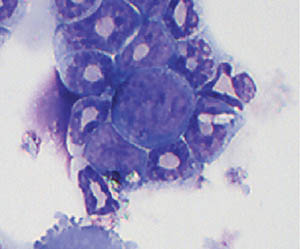

Research By





